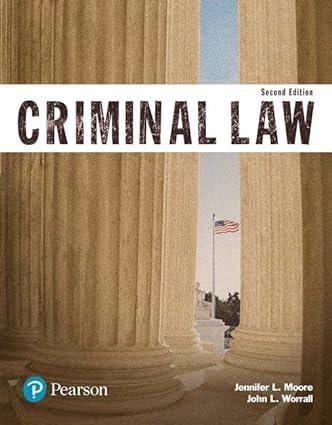On the night of January 9, 2006, Mark Patterson, a police officer for the Westminster Police Department
Question:
On the night of January 9, 2006, Mark Patterson, a police officer for the Westminster Police Department and the Internet Crimes Against Children Task Force, conducted an undercover investigation on the internet. As part of the operation, Patterson entered a Yahoo chat room under the guise of a fourteen year old female, using the screen name “Skatergurl”
. . . At some point that night, Skatergurl received a message from a person with the screen name “FASF” asking her where she lived . . . FASF suggested meeting between 2:00 and 2:15 a.m. at the middle school that night. He told Skatergurl he would arrive in a black truck or a red car and he confirmed what Skatergurl would be wearing. Just before signing out of the chat room, FASF said, “we come here and make love, okay, snuggle, kiss, whatever, okay?” He then asked, “you wanna have sex, honestly,” and Skatergurl responded, “I can try.”
Officer Patterson called another Westminster police officer and they stationed their vehicles near the middle school. At approximately 2:30 a.m., a red Toyota Celica pulled into the parking lot. The officers stopped the car and arrested the driver, Jamey Allen Reid . . . The jury convicted Reid . . . for the attempted CSC with a minor second degree conviction . . .
. . . Courts have struggled to determine the point at which conduct moves beyond the preparatory stage to the perpetration stage. A competition amongst policy considerations exists in this realm of the law. On the one hand, there exists a policy not to punish or convict innocent persons for evil or criminal thoughts alone; on the other hand, a countervailing policy exists to allow law enforcement to prevent criminal conduct before it reaches the point of completion. South Carolina jurisprudence in the area of attempt law is sparse. Cases in South Carolina do not clearly establish any absolute guiding test for our trial courts to employ.
Other state and federal courts have employed a variety of tests, some of which have been used in part or interchangeably by various courts demonstrating the difficulty in defining a universal test. These tests generally are either directed to how much has been done, or instead, how much remains to be done in furtherance of the object crime . . . Case law additionally suggests varying proximity tests. One test credited to Justice Oliver Wendell Holmes, the common law “dangerous proximity” test, focuses on whether the act comes so close or near to the object crime that the danger of success is very great. Essentially, this test focuses upon how much remains to be done before the defendant would have succeeded in his goals; often, factors such as the nearness of danger, the substantiality of harm and the apprehension felt are considered.
. . . Similarly, the “physical proximity” test focuses upon whether the defendant’s acts “may be said to be physically proximate to the intended crime.” This test has been further described as focusing upon an act which amounts to the commencement of the consummation of the object crime or stands “either as the first or some subsequent step in direct movement towards the commission of the offense after preparations are made.
Questions:
1. List the various tests for the actus reus of attempt that the court discusses.
2. Did the defendant cross the line between preparation and attempt? Explain.
Step by Step Answer:






